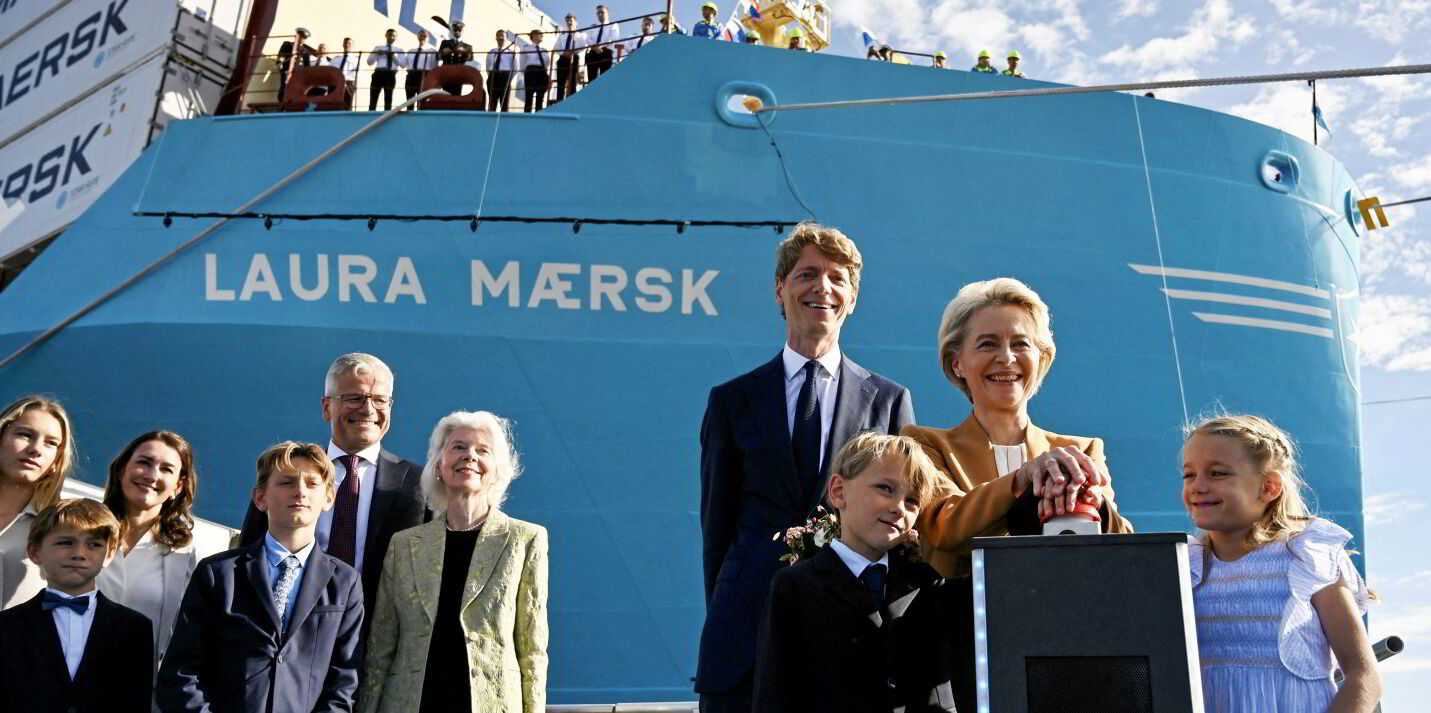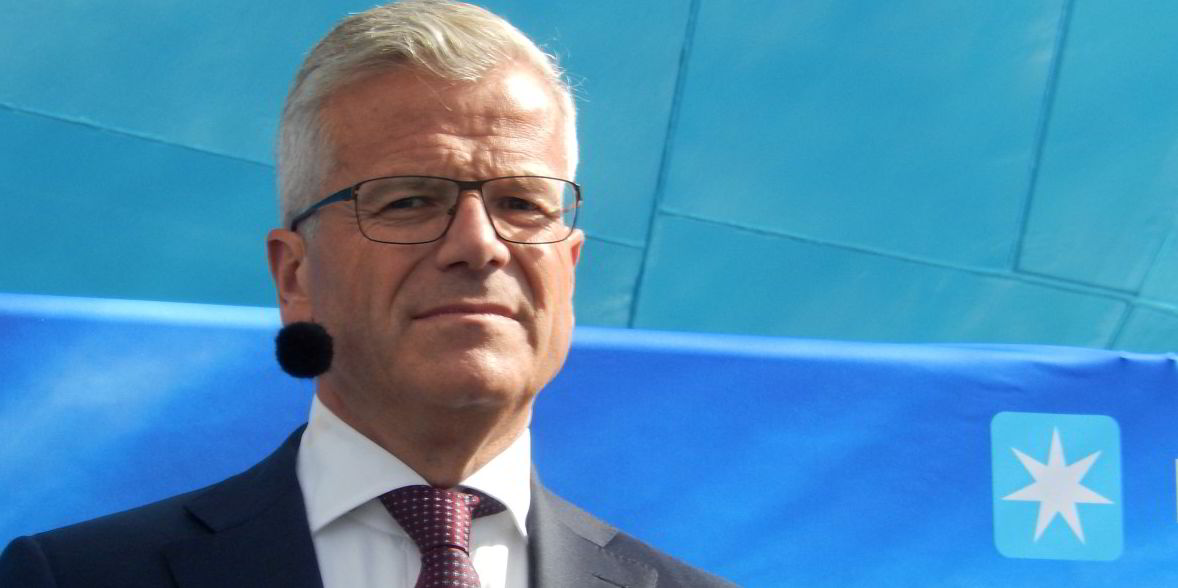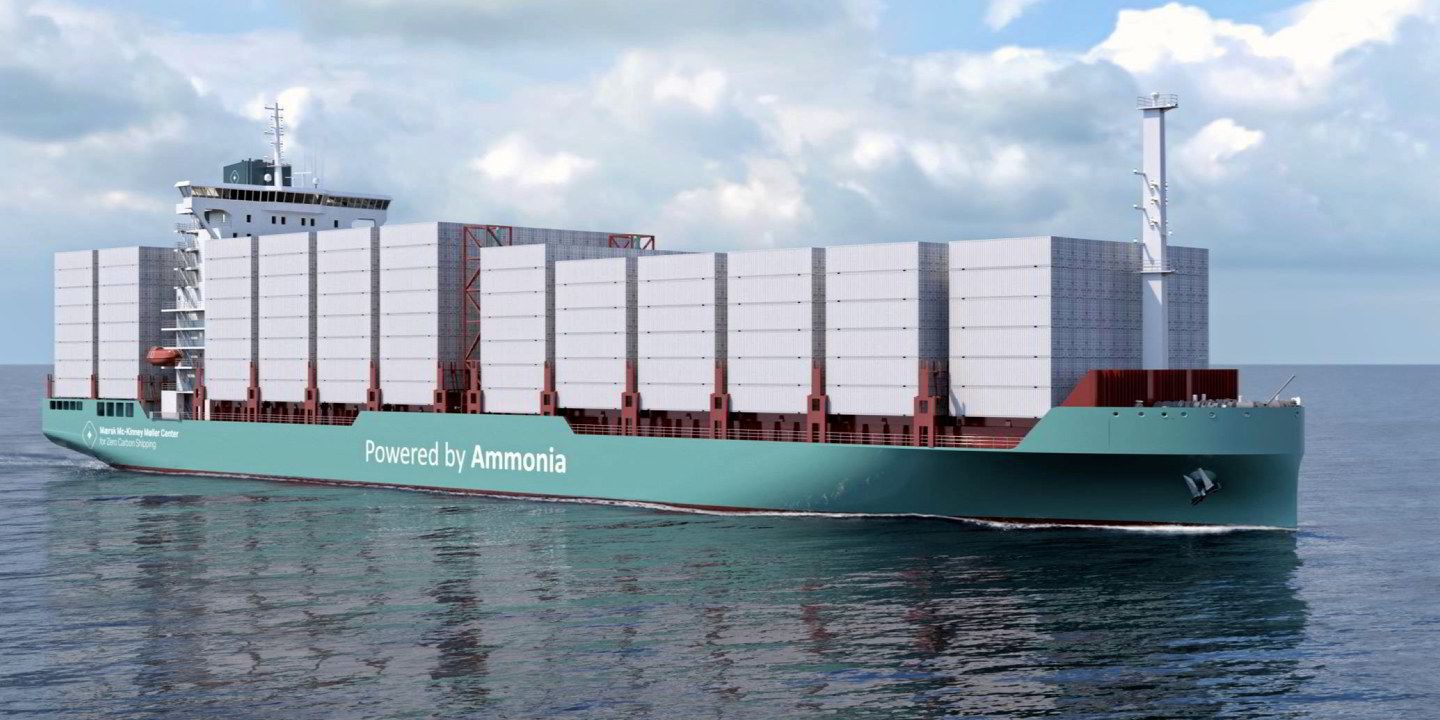Denmark’s AP Moller-Maersk is in discussions with container ship tonnage providers about LNG dual-fuelled vessels in what would be a new direction for the company, which has championed the use of methanol as a marine fuel.
Talk has been rife among bunker market players, brokers and newbuilding sector watchers for several days that Maersk is speaking with companies on a raft of what would be chartered-in LNG dual-fuelled newbuildings.
Negotiations are said to centre around vessels of about 16,000 teu, with the number of boxships under discussion varying from six to 16.
Tonnage provider Seaspan Corp’s name is frequently linked to the business as a potential charterer. However, those close to the talks said other companies could also be involved.
China’s New Times Shipbuilding and Yangzijiang Shipbuilding are being named as the yards that have been approached for the project, which sources stress is still under discussion and not firmed up.
But amid all the market chatter are references to the choice of fuelling for the vessels.
If the talks progress, chartering in LNG dual-fuelled vessels would be a volte-face for a shipowner that has been an anchor advocate for the choice of methanol as a marine fuel for its most recent newbuildings and has previously declared that it will not be taking the LNG-fuelling route.
Maersk was contacted about the newbuilding discussions. A company spokesperson said: “We do not comment on rumours.”
This would not be the first time Maersk has taken a closer look at LNG as a marine fuel.
LNG bunker specialists said that in 2019 Maersk ran a tender for the supply of LNG fuel in Singapore and Spain but did not proceed further with this.
To date, Maersk, which has set a net-zero greenhouse gas emissions target for 2040 across the entire business, has plumped for methanol, contracting 25 dual-fuelled container ships capable of using the fuel.
Three have been delivered — the 2,100-teu Laura Maersk (built 2023) and the 15,150-teu newbuildings Ane Maersk and Astrid Maersk. The first two ships garnered significant attention for their delivery voyages powered by green methanol.
The Astrid Maersk arrived in Slovenia this week and is described by the company as a “green methanol-enabled vessel”.
The shipowner’s challenge has been sourcing enough green methanol to fuel these newbuildings. While the company is investing in its own production, executives have acknowledged a supply gap specifically for these initial 25 vessels.
Close industry followers of Maersk — which looks set to slip into third position in fleet terms behind rivals CMA CGM and MSC Mediterranean Shipping Company — said the difficulty in procuring sufficient green methanol volumes is one of the reasons the liner company is taking a fresh look at LNG.
They mention relatively new chief executive Vincent Clerc, who has been at the helm for 18 months, describing him as an astute numbers guy over a Moller-Maersk visionary. One suggested that the CEO will not be afraid to take new directions if these stack up commercially and with the company’s environmental goals.
Clerc has already said that the company — which is also looking at ammonia-fuelled designs — will consider other technologies and energy solutions to decarbonise as these emerge.
But Maersk watchers said the industry is unlikely to see the company directly ordering LNG-fuelled tonnage as this would “impact its branding”.
Many shipowners have followed Maersk’s lead, boosting the methanol dual-fuelled fleet to 304 vessels of which 269 are on order and 173 of these are container ships, according to figures from classification society DNV.
The non-cryogenic fuel is seen as easier to handle and transport. But its green variety is currently very expensive — bunker brokers said Maersk’s ship delivery volumes cost about $2,500 per tonne — and in very short supply.
In contrast, proponents of LNG as a fuel argue that using fossil LNG as a fuel will reduce CO2 emissions by about 20% and means a vessel can be compliant under the incoming FuelEU Maritime regulations until the end of 2039.
Blending one-third of the fuel as bio-LNG will extend the compliance to 2050.
By contrast, methanol, which has a lower energy density than LNG, would need a 95% bio blend to be compliant in 2050.







